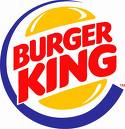Cathy Horyn, Ford and Job One.
I love Fashion Week in NYC. Not sure what it’s called this year sponsor-wise, so let’s just call it Fashion Week. One reason I like it so much is it allows me to read lots of Cathy Horyn’s fashion reviews in The New York Times. She is one of my favorite writers. There is something intriguing about her prose. Often I don’t even know what fabrics and garments she’s detailing, yet I’m captured by her words, descriptions and metaphors.
Ms. Horyn is quite powerful and has been the subject of many designers’ anger and has, in fact, been banned from some tents because of her pen. It gives her more power.
In today’s paper, she had a column about Tom Ford’s show — he of Gucci fame. The review of the show, his first with women’s clothes in 6 years, was nice and painted a wonderful picture of the “glamorous, controlled” event. It explained the amazing presentation of his new line, but it didn’t do what Ms. Horyn normally does so well, explain the clothes. She was so caught up in the event and Beyonce and other personalities that she forgot to strap on her editorial eye and dig into the linen. Glad I read it. Glad she was invited. (Wish I was invited.) Hoped she has been a teeny bit less star stuck. Peace!




